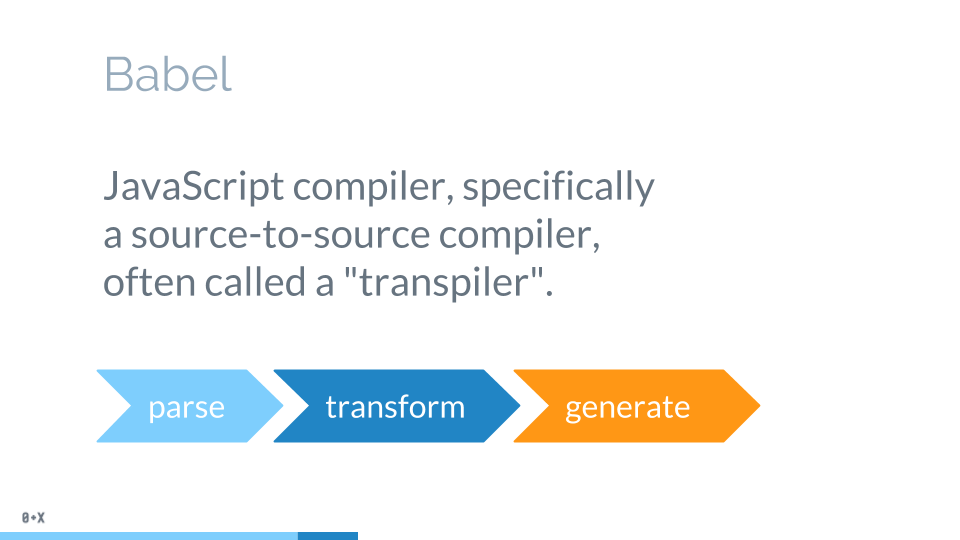欢迎关注我的公众号睿Talk,获取我最新的文章:
一、前言
最近突然对 AST 产生了兴趣,深入了解后发现它的使用场景还真的不少,很多我们日常开发使用的工具都跟它息息相关,如 Babel、ESLint 和 Prettier 等。本文除了介绍 AST 的一些基本概念外,更偏重实战,讲解如何利用它来对代码进行修改。
二、基本概念
AST 全称 Abstract Syntax Tree,也就是抽象语法树,它是将编程语言转换成机器语言的桥梁。浏览器在解析 JS 的过程中,会根据 ECMAScript 标准将字符串进行分词,拆分为一个个语法单元。然后再遍历这些语法单元,进行语义分析,构造出 AST。最后再使用 JIT 编译器的全代码生成器,将 AST 转换为本地可执行的机器码。如下面一段代码:
function add(a, b) {
return a + b;
}进行分词后,会得到这些 token:
对 token 进行分析,最终会得到这样一棵 AST(简化版):
{
"type": "Program",
"body": [
{
"type": "FunctionDeclaration",
"id": {
"type": "Identifier",
"name": "add"
},
"params": [
{
"type": "Identifier",
"name": "a"
},
{
"type": "Identifier",
"name": "b"
}
],
"body": {
"type": "BlockStatement",
"body": [
{
"type": "ReturnStatement",
"argument": {
"type": "BinaryExpression",
"left": {
"type": "Identifier",
"name": "a"
},
"operator": "+",
"right": {
"type": "Identifier",
"name": "b"
}
}
}
]
}
}
],
"sourceType": "module"
}拿到 AST 后就可以根据规则转换为机器码了,在此不再赘述。
三、Babel 工作原理
AST 除了可以转换为机器码外,还能做很多事情,如 Babel 就能通过分析 AST,将 ES6 的代码转换成 ES5。
Babel 的编译过程分为 3 个阶段:
- 解析:将代码字符串解析成抽象语法树
- 变换:对抽象语法树进行变换操作
- 生成:根据变换后的抽象语法树生成新的代码字符串
Babel 实现了一个 JS 版本的解析器Babel parser,它能将 JS 字符串转换为 JSON 结构的 AST。为了方便对这棵树进行遍历和变换操作,babel 又提供了traverse工具函数。完成 AST 的修改后,可以使用generator生成新的代码。
四、AST 实战
下面我们来详细看看如何对 AST 进行操作。先建好如下的代码模板:
import parser from "@babel/parser";
import generator from "@babel/generator";
import t from "@babel/types";
import traverser from "@babel/traverse";
const generate = generator.default;
const traverse = traverser.default;
const code = ``;
const ast = parser.parse(code);
// AST 变换
const output = generate(ast, {}, code);
console.log("Input \n", code);
console.log("Output \n", output.code);- 构造一个 hello world
打开 AST Explorer,将左侧代码清空,再输入 hello world,可以看到前后 AST 的样子:
// 空
{
"type": "Program",
"body": [],
"sourceType": "module"
}
// hello world
{
"type": "Program",
"body": [
{
"type": "ExpressionStatement",
"expression": {
"type": "Literal",
"value": "hello world",
"raw": "'hello world'"
},
"directive": "hello world"
}
],
"sourceType": "module"
}接下来通过代码构造这个ExpressionStatement:
const code = ``;
const ast = parser.parse(code);
// 生成 literal
const literal = t.stringLiteral('hello world')
// 生成 expressionStatement
const exp = t.expressionStatement(literal)
// 将表达式放入body中
ast.program.body.push(exp)
const output = generate(ast, {}, code);可以看到 AST 的创建过程就是自底向上创建各种节点的过程。这里我们借助 babel 提供的types对象帮我们创建各种类型的节点。更多类型可以查阅这里。
同样道理,下面我们来看看如何构造一个赋值语句:
const code = ``;
const ast = parser.parse(code);
// 生成 identifier
const id = t.identifier('str')
// 生成 literal
const literal = t.stringLiteral('hello world')
// 生成 variableDeclarator
const declarator = t.variableDeclarator(id, literal)
// 生成 variableDeclaration
const declaration = t.variableDeclaration('const', [declarator])
// 将表达式放入body中
ast.program.body.push(declaration)
const output = generate(ast, {}, code);- 获取 AST 中的节点
下面我们将对这段代码进行操作:
export default {
data() {
return {
count: 0
}
},
methods: {
add() {
++this.count
},
minus() {
--this.count
}
}
}假设我想获取这段代码中的data方法,可以直接这么访问:
const dataProperty = ast.program.body[0].declaration.properties[0]也可以使用 babel 提供的traverse工具方法:
const code = `
export default {
data() {
return {
count: 0
}
},
methods: {
add() {
++this.count
},
minus() {
--this.count
}
}
}
`;
const ast = parser.parse(code, {sourceType: 'module'});
// const dataProperty = ast.program.body[0].declaration.properties[0]
traverse(ast, {
ObjectMethod(path) {
if (path.node.key.name === 'data') {
path.node.key.name = 'myData';
// 停止遍历
path.stop();
}
}
})
const output = generate(ast, {}, code);traverse方法的第二个参数是一个对象,只要提供与节点类型同名的属性,就能获取到所有的这种类型的节点。通过path参数能访问到节点信息,进而找出需要操作的节点。上面的代码中,我们找到方法名为data的方法后,将其改名为myData,然后停止遍历,生成新的代码。
- 替换 AST 中的节点
可以使用replaceWith和replaceWithSourceString替换节点,例子如下:
// 将 this.count 改成 this.data.count
const code = `this.count`;
const ast = parser.parse(code);
traverse(ast, {
MemberExpression(path) {
if (
t.isThisExpression(path.node.object) &&
t.isIdentifier(path.node.property, {
name: "count"
})
) {
// 将 this 替换为 this.data
path
.get("object")
.replaceWith(
t.memberExpression(t.thisExpression(), t.identifier("data"))
);
// 下面的操作跟上一条语句等价,更加直观方便
// path.get("object").replaceWithSourceString("this.data");
}
}
});
const output = generate(ast, {}, code);- 插入新的节点
可以使用pushContainer、insertBefore和insertAfter等方法来插入节点:
// 这个例子示范了 3 种节点插入的方法
const code = `
const obj = {
count: 0,
message: 'hello world'
}
`;
const ast = parser.parse(code);
const property = t.objectProperty(
t.identifier("new"),
t.stringLiteral("new property")
);
traverse(ast, {
ObjectExpression(path) {
path.pushContainer("properties", property);
// path.node.properties.push(property);
}
});
/*
traverse(ast, {
ObjectProperty(path) {
if (
t.isIdentifier(path.node.key, {
name: "message"
})
) {
path.insertAfter(property);
}
}
});
*/
const output = generate(ast, {}, code);- 删除节点
使用remove方法来删除节点:
const code = `
const obj = {
count: 0,
message: 'hello world'
}
`;
const ast = parser.parse(code);
traverse(ast, {
ObjectProperty(path) {
if (
t.isIdentifier(path.node.key, {
name: "message"
})
) {
path.remove();
}
}
});
const output = generate(ast, {}, code);五、总结
本文介绍了 AST 的一些基本概念,讲解了如何使用 Babel 提供的 API,对 AST 进行增删改查的操作。掌握这项技能,再加上一点想象力,就能制作出实用的代码分析和转换工具。



**粗体** _斜体_ [链接](http://example.com) `代码` - 列表 > 引用。你还可以使用@来通知其他用户。